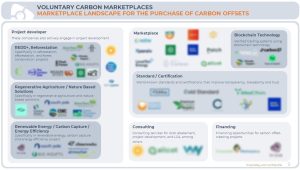Are Carbon Credit Exchanges a Good Investment?
Carbon Credit Exchanges a Good Investment
As global markets for carbon credits continue to mature and the need to decarbonize grows, they are becoming more and more popular as a way to balance out emissions. The main difference between carbon credits and other asset classes is that they have a specific purpose – to avoid or remove greenhouse gases from the atmosphere, while also generating additional ’co-benefits’ such as improved welfare for the local population, better water quality or reduced economic inequality.
In the future, the demand for these types of carbon credit exchange could outstrip supply – as was the case with EU ETS emissions trading before it closed down in 2009. However, there are currently many factors holding back market growth and making it difficult to scale up this type of carbon project.

One of the key challenges is the lack of liquidity in these credits, as they are not traded in a regulated market such as the EU ETS. This means that there is no way to tell whether the price of these credits is a fair price, or if they are being offered for next-to-nothing.
Are Carbon Credit Exchanges a Good Investment?
It is also hard to know the quality of these credits, as the certification process is not a legal requirement, which makes it harder to verify their authenticity. This also makes them a less attractive investment option than mainstream carbon credits, which are backed by government backing and a strict auditing process that ensures the quality of the credits being issued.
Some exchanges are trying to simplify and speed up the trade of carbon credits by creating standard products that guarantee a certain set of basic characteristics. These are known as reference contracts, and both the New York-based Xpansiv CBL and Singapore-based ACX have set them up.
These include a defined underlying project, a recent vintage and a certification from a restricted group of standards. These types of credits tend to be more expensive than mainstream credits, but they offer the same underlying premise – to avoid or remove greenhouse gasses from the atmosphere – while also generating additional ’co-benefits’ that help meet the UN’s Sustainable Development Goals.
Another way to invest in carbon is through futures contracts. These are like stock futures, except that instead of investing in a company, you are trading a contract with the seller to pay a specific price at some point in the future. Unlike stocks, you don’t have any control over the prices of futures contracts and they are typically more risky than buying shares of a company.
There are many different ways to buy carbon credits but the most common route is through exchange-traded funds (ETFs). There are a number of carbon ETFs on the market and they are available in several different regions.
If you are looking to invest in carbon, then it is important to find an ETF that tracks a particular region of the market. For example, KraneShares offers a Global Carbon Strategy ETF that focuses on European and U.S. carbon credits, while iShares offers a Green Bond ETF that focuses on low-carbon bonds from companies and governments around the world.